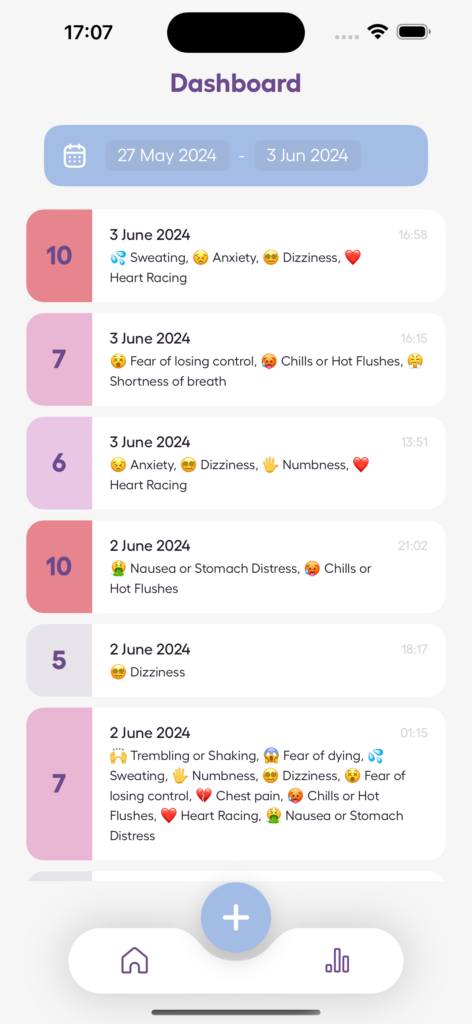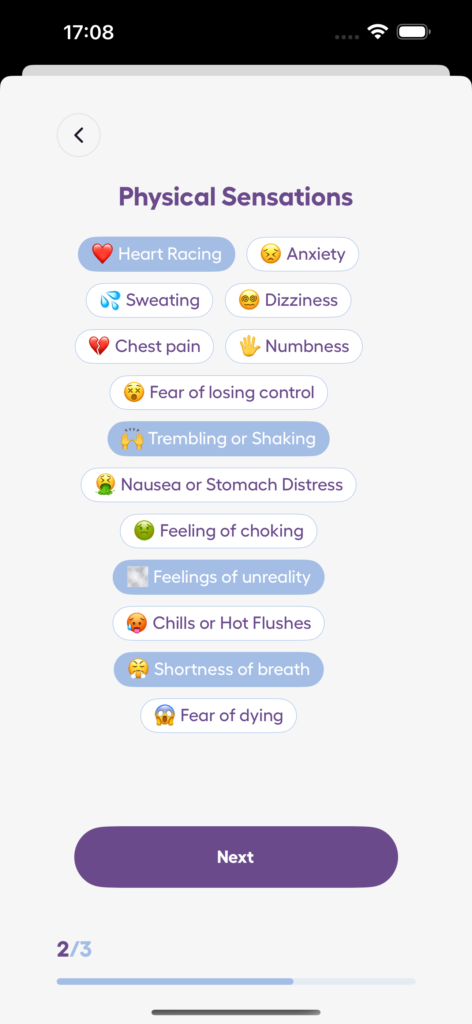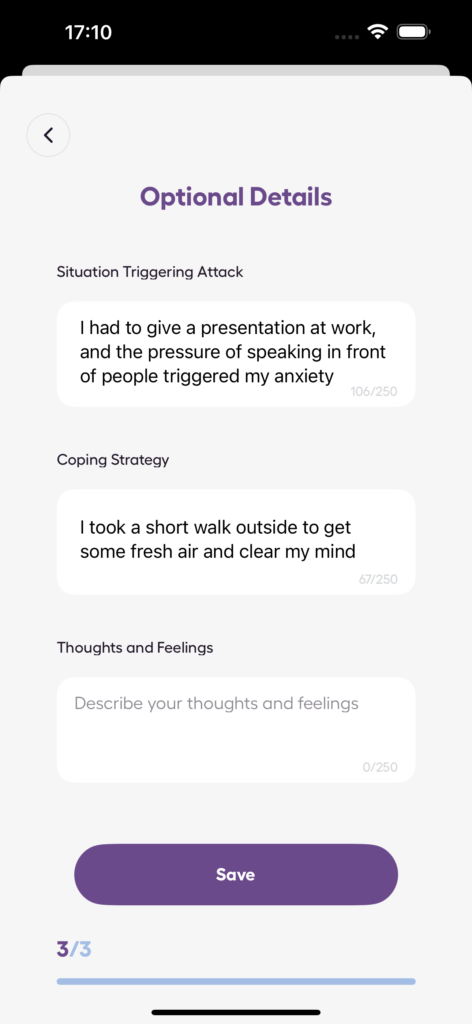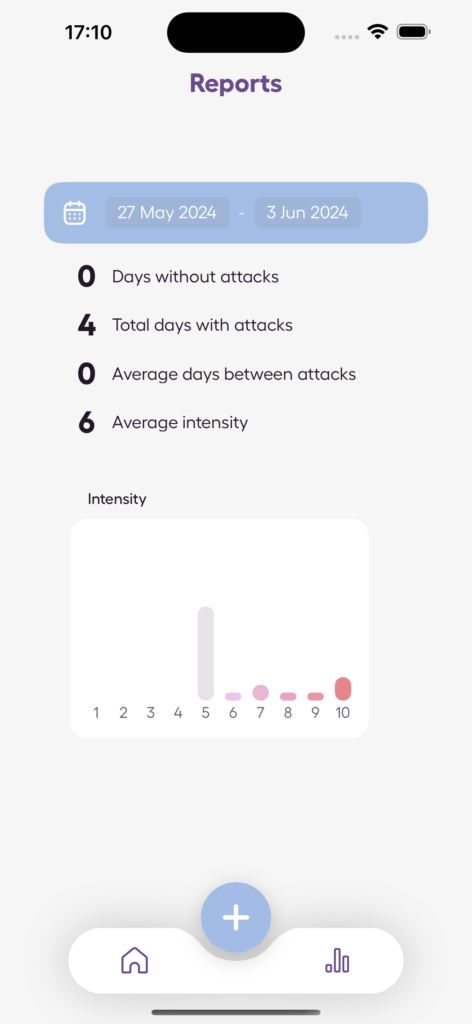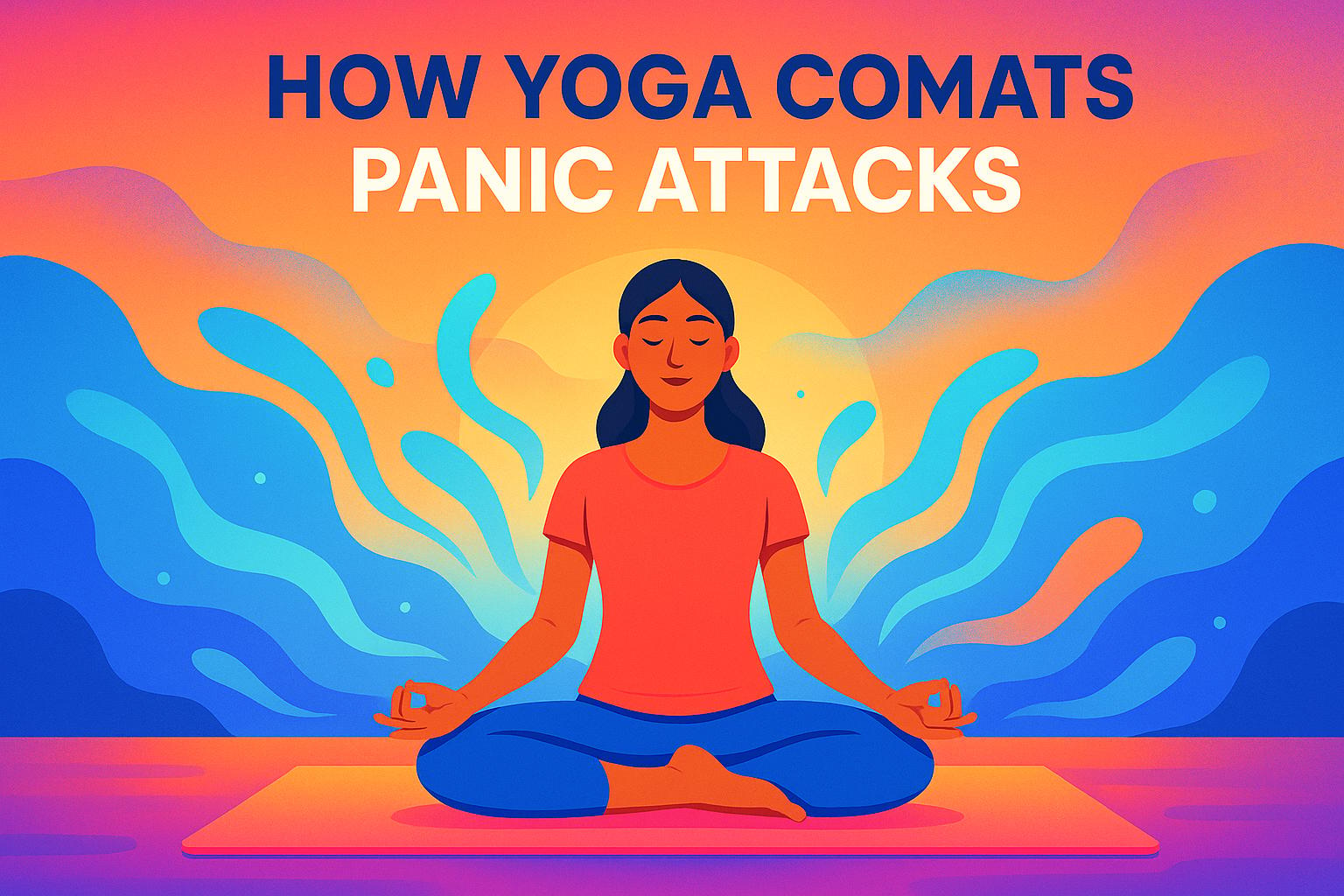Panic attacks can overwhelm both your body and mind. While racing hearts and sweating are well-known symptoms, the mental effects are just as intense. Here’s a quick look at the 8 common cognitive symptoms you might experience during a panic attack:
- Fear of Losing Control: Feeling like you’re "going crazy" or losing control.
- Racing Thoughts: Your mind jumps rapidly between scary or anxious ideas.
- Feeling Detached from Reality: Experiencing disconnection, like being in a dream or watching yourself from the outside.
- Heightened Awareness: Everything feels amplified – sounds, sensations, and movements.
- Imagining Worst-Case Scenarios: Your brain catastrophizes minor issues into major threats.
- Fear of Dying: A sudden, intense belief that death is imminent.
- Narrow Focus: You fixate only on your symptoms, making it hard to think about anything else.
- Confusion and Disorientation: Brain fog that makes it hard to think or make decisions.
These mental symptoms can feel overwhelming, but understanding them is the first step to managing them. Tools like breathing exercises, mindfulness, and therapy (like CBT) can help regain control. Apps like Anxiety Journal can also track your triggers and provide insights to share with professionals. Remember, you’re not alone, and these symptoms are manageable.
Related video from YouTube
What to Know About Panic Attacks
A panic attack hits like a tidal wave of fear that peaks within minutes, bringing on intense physical and mental symptoms. The National Institute of Mental Health reports these episodes can pop up out of nowhere, leaving you feeling helpless and confused.
What Are Panic Attacks?
"Panic disorder is an overreaction of fear and anxiety to daily life stressors." – Johns Hopkins Medicine
Think of a panic attack as your body’s alarm system going haywire – like a smoke detector blasting at full volume when there’s no fire. These episodes typically last 10-20 minutes, though when you’re in the middle of one, it can feel like forever. What makes them extra tricky? They can show up even when there’s no clear reason, which often makes them even more unsettling.
Common Triggers and Risk Factors
Want to get a handle on panic attacks? Start by knowing what sets them off. Here’s what can spark these episodes:
Your body’s built-in factors play a big role – things like your genes and hormone levels, plus any existing health conditions you might have. Then there’s life stuff: dealing with ongoing stress, big life shake-ups, past trauma, or specific fears (like being terrified of flying or heights).
How Cognitive Symptoms Affect Panic Attacks
During an attack, your brain’s fear center (the amygdala) kicks into overdrive. It’s like a domino effect – scary thoughts trigger physical symptoms, which then create more scary thoughts. It’s a loop that can feel impossible to break.
Want to keep tabs on what’s happening? Tools like the Anxiety Journal’s Panic Attack & Anxiety Tracker can help you spot patterns in your experiences.
Here’s how your thoughts mess with panic attacks:
| Thought Pattern | What It Does to You |
|---|---|
| Mind Going 100 MPH | Makes physical symptoms worse |
| Feeling Out of Control | Cranks up anxiety |
| Feeling Disconnected | Makes it hard to stay present |
| Thinking the Worst | Makes attacks last longer |
Getting to know these patterns is your first step toward taking back control during panic attacks.
8 Cognitive Symptoms of Panic Attacks
When panic hits, your mind can feel like it’s spinning out of control. These mental symptoms show up when your brain thinks you’re in danger – even when you’re perfectly safe. Let’s look at what happens in your head during a panic attack.
1. Fear of Losing Control
This goes way beyond regular worry. People often tell me they’re convinced they’re "going crazy" or about to "lose it" completely. Here’s the thing: while this feeling is super intense, it’s just a false alarm. The tricky part? Worrying about losing control often makes the panic attack worse.
2. Racing Thoughts
Picture your mind as a TV that’s changing channels every second. You might jump from "What’s wrong with me?" to "I need to escape!" in the blink of an eye. The Anxiety Journal can help you spot these thought patterns – kind of like hitting pause on that racing mind.
3. Feeling Detached from Reality
Your brain sometimes hits the emergency brake by making you feel disconnected. People often describe watching themselves from outside their body or feeling like they’re in a dream. Remember: this weird feeling is just temporary – your brain’s clumsy way of trying to help.
4. Heightened Awareness
Suddenly, everything feels turned up to 11. Every little noise, movement, or sensation seems HUGE. It’s like your brain’s security system got way too sensitive and starts treating everything as a threat.
5. Imagining Worst-Case Scenarios
Your mind becomes a disaster movie director. A tiny twinge in your chest? Must be serious! A little dizziness? Everyone’s going to notice! Your brain jumps to the scariest possible conclusion, even when there’s a simple explanation.
6. Fear of Dying
Many people get hit with a sudden, intense fear that they’re about to die. It feels 100% real in the moment, but it’s just your body’s alarm system misfiring.
7. Narrow Focus
It’s like wearing blinders – all you can see are your panic symptoms. This tunnel vision makes it super hard to think about anything else, which can make the attack last longer.
8. Confusion and Disorientation
Brain fog rolls in, making it tough to think straight or make decisions. While this mental cloudiness is temporary, it can be extra challenging when you’re at work or in social situations.
| Symptom | Daily Impact | How It Shows Up |
|---|---|---|
| Racing Mind | Can’t concentrate | Thoughts jumping everywhere |
| Loss of Control Fear | Avoiding places/situations | Intense worry about sanity |
| Reality Disconnect | Hard to stay present | Feeling "not really there" |
| Over-Alert | Constant tiredness | Jumping at small things |
Getting to know these symptoms is just the start – but it’s an important first step in taking control back from panic attacks.
sbb-itb-b1dedcc
Ways to Manage Cognitive Symptoms
When panic attacks make your mind feel chaotic, you can take back control with practical strategies that work.
Relaxation and Mindfulness Exercises
Here’s a simple breathing technique that can help during a panic attack: breathe in through your nose for 4 counts, hold for 2, then let it out through your mouth for 6 counts. This slows your heart rate and gives your racing mind a clear focus point.
Want to snap back to the present moment? Try this: touch something nearby, spot three objects you can see, notice two sounds, and pick out one smell. It’s a quick way to pull your mind back to what’s happening right now.
Just starting with meditation? That’s perfect – even 2 minutes of quiet focus makes a difference. The more you practice, the better you’ll handle panic symptoms when they pop up.
Getting Professional Support
Self-help techniques work great, but sometimes you need an expert in your corner. Cognitive-behavioral therapy (CBT) stands out as one of the best tools for handling panic attacks. Your therapist becomes like a personal trainer for your mind – they’ll help you spot those sneaky thought patterns and teach you how to push back against them.
For instance, when your brain throws out thoughts like "I’m going to lose control", they’ll show you how to fact-check these ideas, just like a detective looking for real evidence.
| Support Option | Benefits | What You’ll Do |
|---|---|---|
| CBT | Tackles thought patterns head-on | Meet weekly, practice at home |
| Group Sessions | Connect with others, share tips | Talk with people who get it |
| Crisis Help | Quick support when you need it | Get help right away |
Using Apps for Tracking and Support
Apps can be your digital sidekick in managing panic attacks. Take the Anxiety Journal app – it’s like having a detective notebook in your pocket. You can spot patterns in your panic attacks that you might miss otherwise. By keeping tabs on what sets off your attacks and which tricks help you cope, you’ll build up your own personal playbook of what works.
The app’s stress tracker works like an early warning system, letting you know when it’s time to use your coping skills before panic takes hold. And don’t worry – your entries stay private, so you can be totally honest about what you’re experiencing.
Conclusion
Panic attacks hit hard, but knowing what’s happening in your mind during one is a game-changer. When you understand these mental symptoms, you’re not alone in the dark anymore – you’ve got a map to work with.
Let’s talk numbers: panic disorder affects 6 million adults in the US, with women getting hit more often than men. About 11% of adults deal with the mental symptoms yearly. These stats show one thing clearly – if you’re going through this, you’re part of a bigger community than you might think.
The mental symptoms we covered? They’re totally manageable. Take the Anxiety Journal app – it’s like having a detective partner that helps you spot patterns in your panic attacks. This info is gold when you’re working with healthcare pros. You’ve got options: start small with breathing exercises, team up with a therapist for CBT, or try digital tools. Every single step counts.
Building your panic attack management toolkit takes time, but you’ve got solid options – from mindfulness to CBT to tracking your symptoms. Here’s the thing: having panic attacks doesn’t mean you’re weak. It’s a health issue that needs and deserves proper care. If panic attacks keep showing up uninvited, talk to a mental health pro. They can help you find treatments that work specifically for you.
FAQs
A mental panic attack hits you with both intense thoughts and physical symptoms at once. It’s like being caught in a storm where your mind and body react strongly together, making you feel completely overwhelmed.
What are unwanted thoughts and mental experiences during panic attacks?
During panic attacks, your mind often fills with scary thoughts – usually about losing control, death, or feeling like you’re "going crazy", as noted by the National Institute of Mental Health (NIMH). You might catch yourself thinking "I’m about to faint" or "I’m losing my mind." These thoughts can make your physical symptoms worse – like when worrying about dying makes your heart pound even harder.
Here’s what happens in your mind during a panic attack:
- Your fear spikes suddenly: A wave of anxiety crashes over you without warning
- Reality feels strange: The world around you might seem unreal, or you might feel disconnected from yourself
- Your thinking gets fuzzy: Making decisions or thinking straight becomes really hard
The Merck Manual points out that a panic attack needs at least four out of thirteen specific symptoms to be diagnosed – these include both what’s happening in your mind and body. Want to keep track of your experiences? Tools like the Anxiety Journal app can help you spot patterns and triggers, which can be super helpful when talking to healthcare providers.


